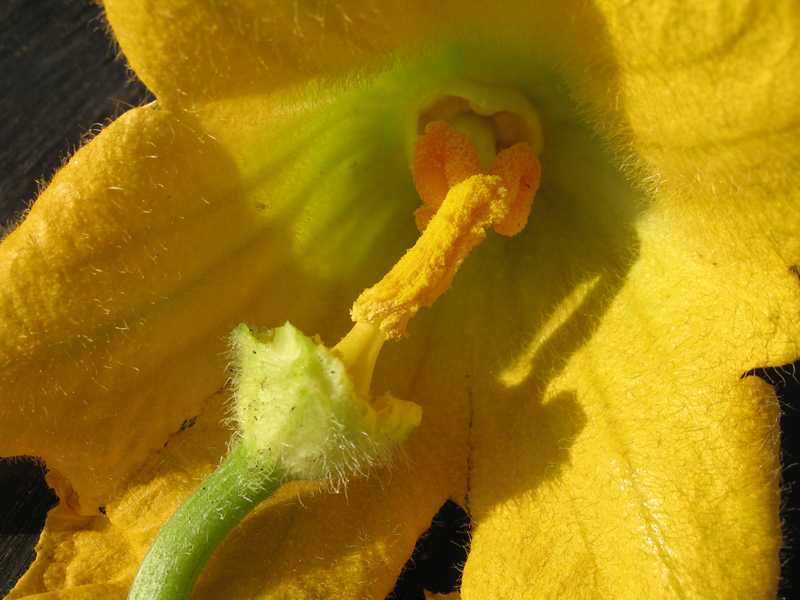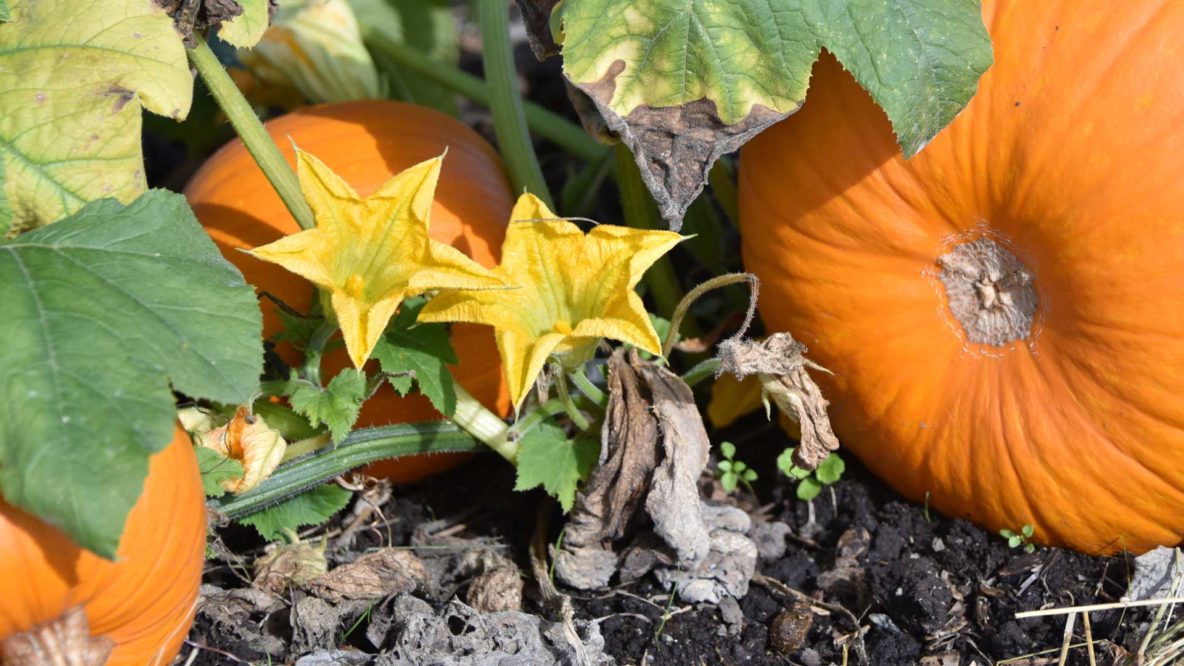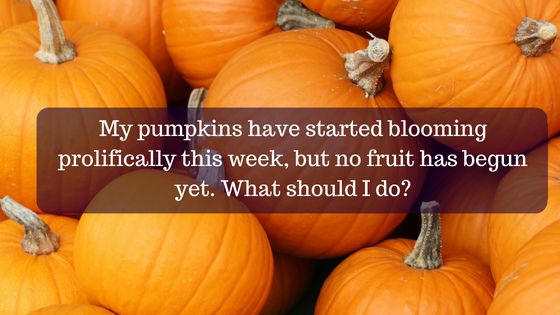
A lot of people get nervous when they see tons of flowers on their pumpkin vines and no fruit, but rest assured you are right on schedule. Right around mid-summer, pumpkins will usually start to flower in large numbers. But this is only half of the pumpkin-making process. These early bloomers are just the pollen-producing male flowers. Male flowers tend to have smaller stems and grow farther away from the main stem of the pumpkin. (see below)
Several weeks after the male flowers bloom, the female flowers will start to form. These can be identified by little bump just behind the flower. This is actually the ovary from which a new pumpkin will grow. (also see below)
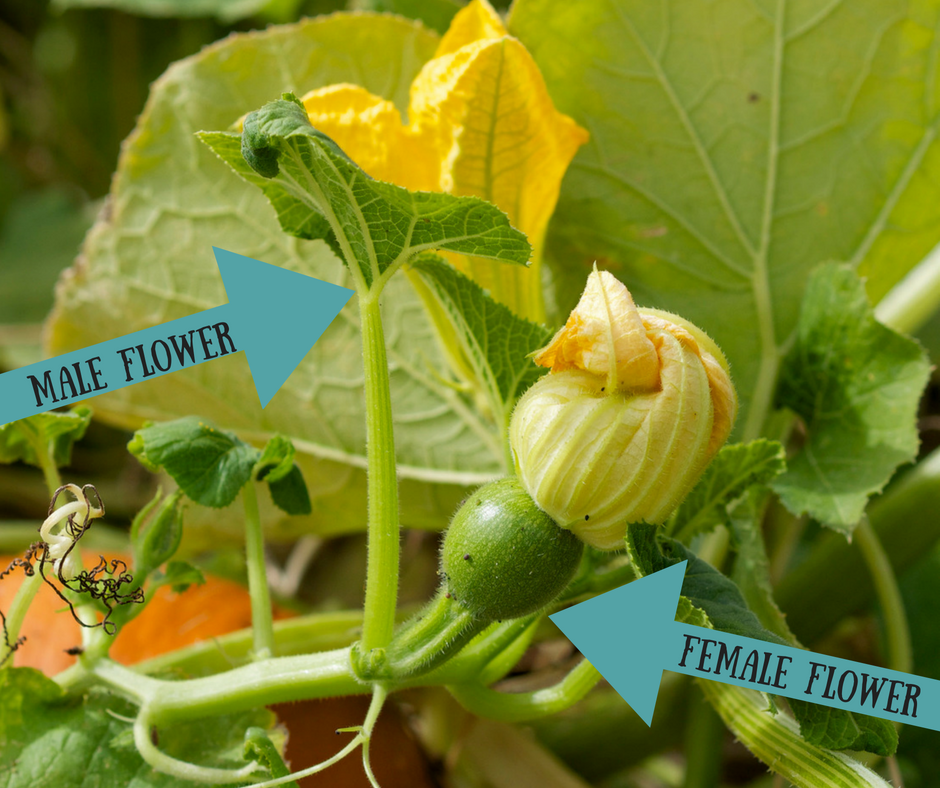
Like all members of the cucurbit family, including squash, cucumbers and zucchini, pumpkins are bee-pollinated. As they forage for food, bees transfer the pollen from the male flowers to the female ones. Once the female flowers are fertilized, the pumpkins will start to grow. To encourage bees to visit your pumpkin patch, try planting some bright flowers nearby to attract them. Lavender, cosmos, bee balm, black-eyed susan, salvia and blanket flower all make great companions for pumpkins.
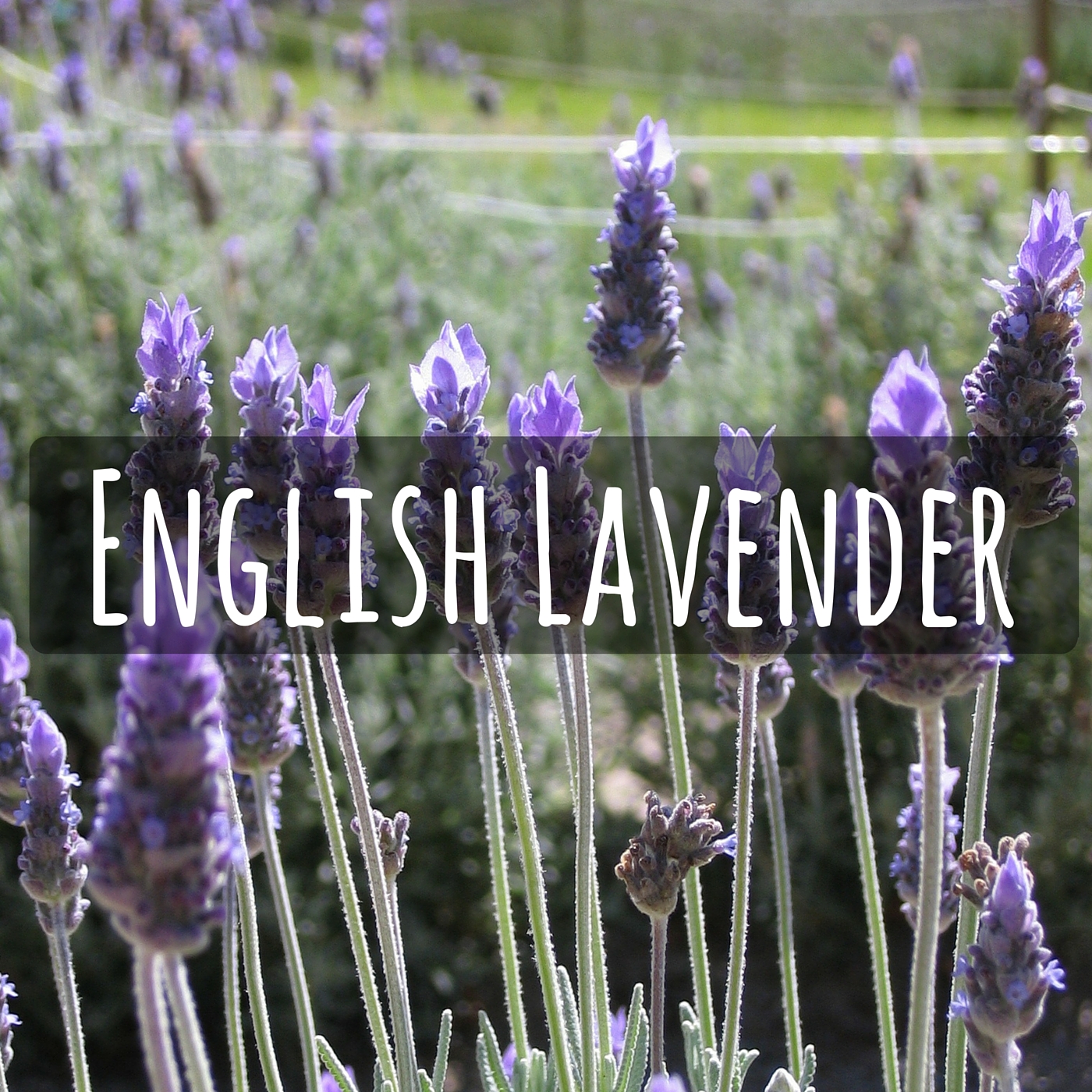
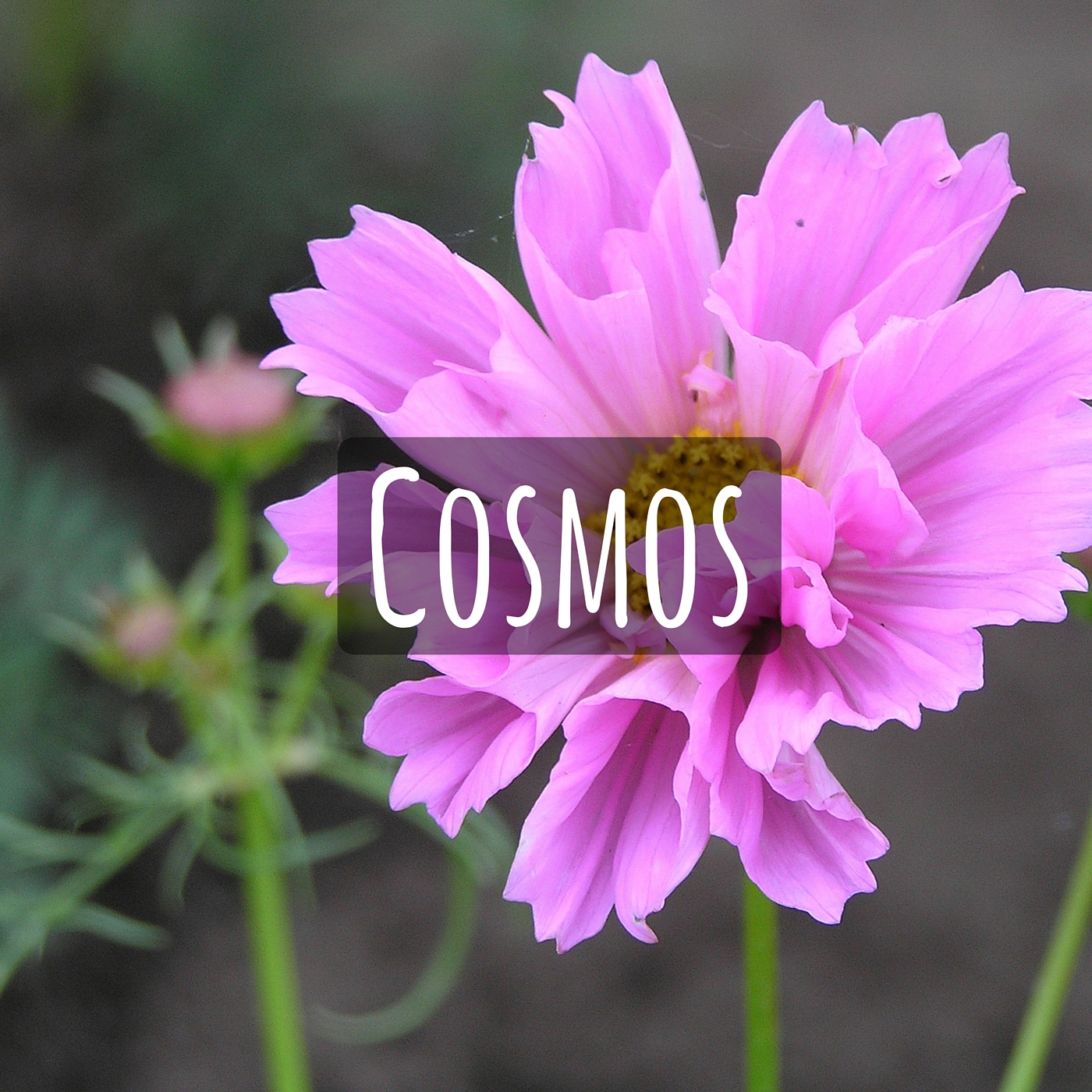
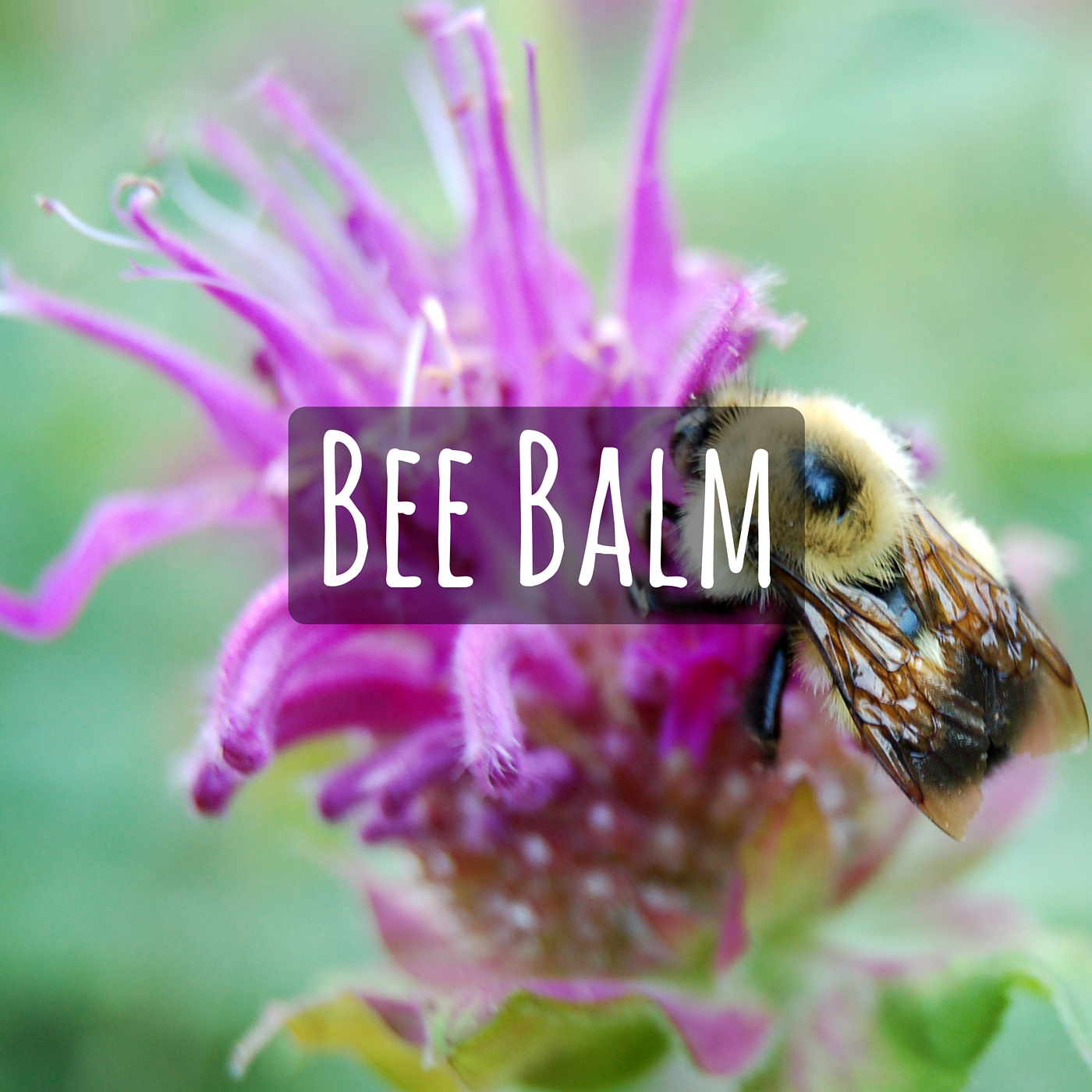
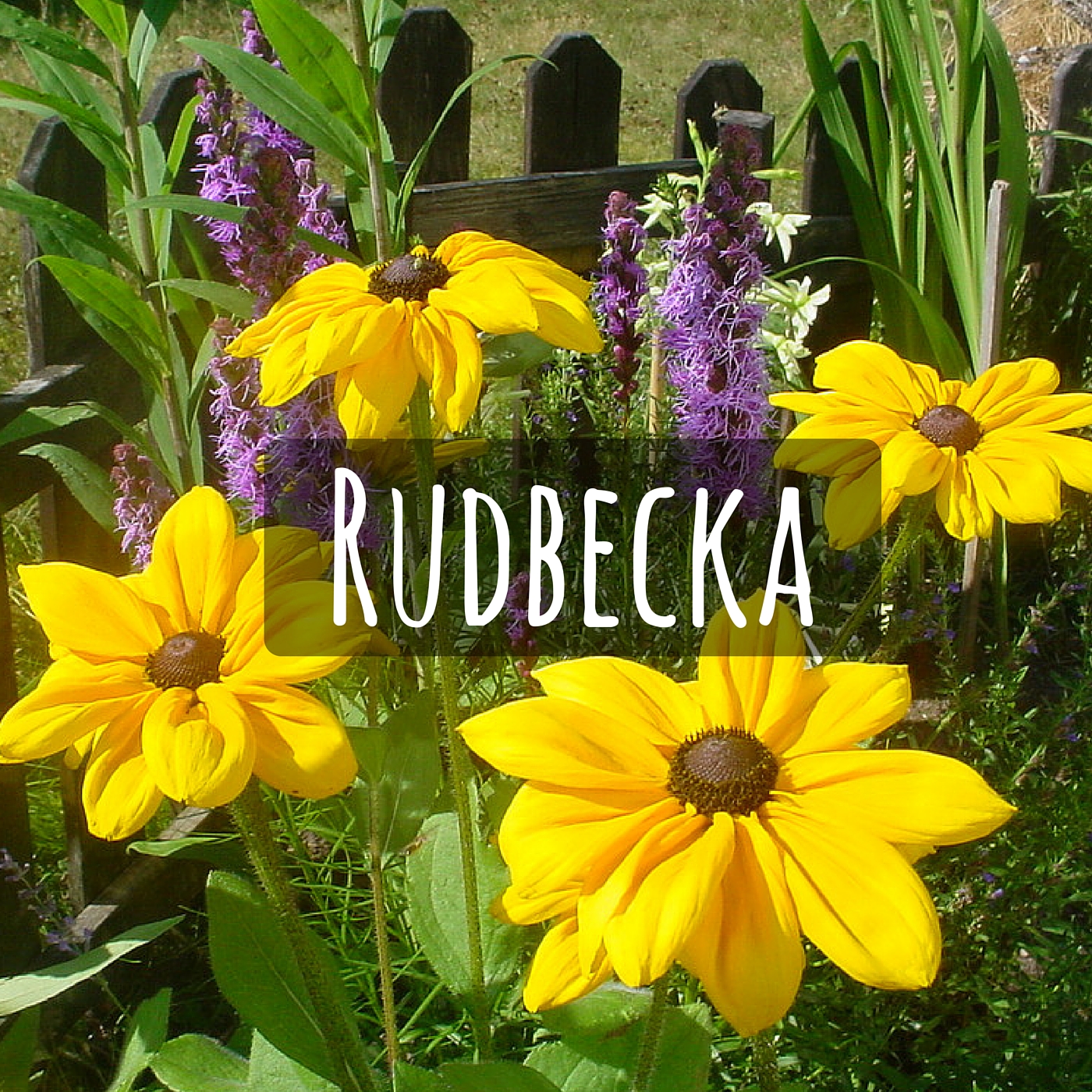
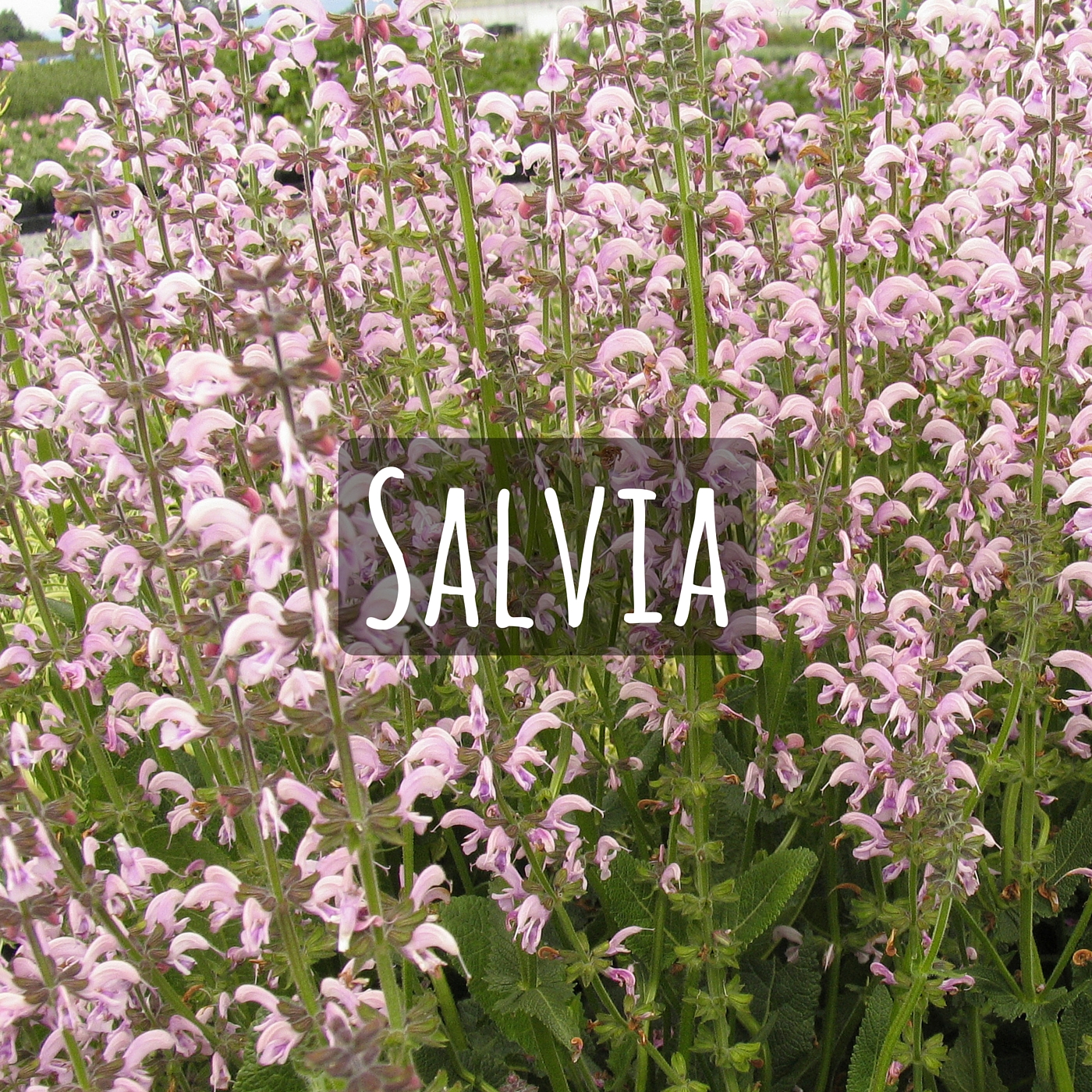

Most of the time, once both male and female flowers form, all you need to do is sit back and let Mother Nature do her thing But you can help the process along by hand-fertilizing your pumpkins. This way you can choose which flowers to pollinate, picking the healthiest looking ones. You’ll also significantly increase (though not necessarily guarantee) the chances of a successful fertilization;Hand Pollinating
1. It’s best to do your pollinating in the early morning, just after the female flower has opened up.
2. Pick a male flower off the vine and peel off the petals to reveal the stamen. You can brush it against your fingers and see if you can see little, yellow bits of pollen come off.
3. Gently swab the pollen on to the center (stigma) of the female flower. Once the female flower is fertilized, the yellow flower will eventually wither away and the little baby pumpkin will begin to grow!
